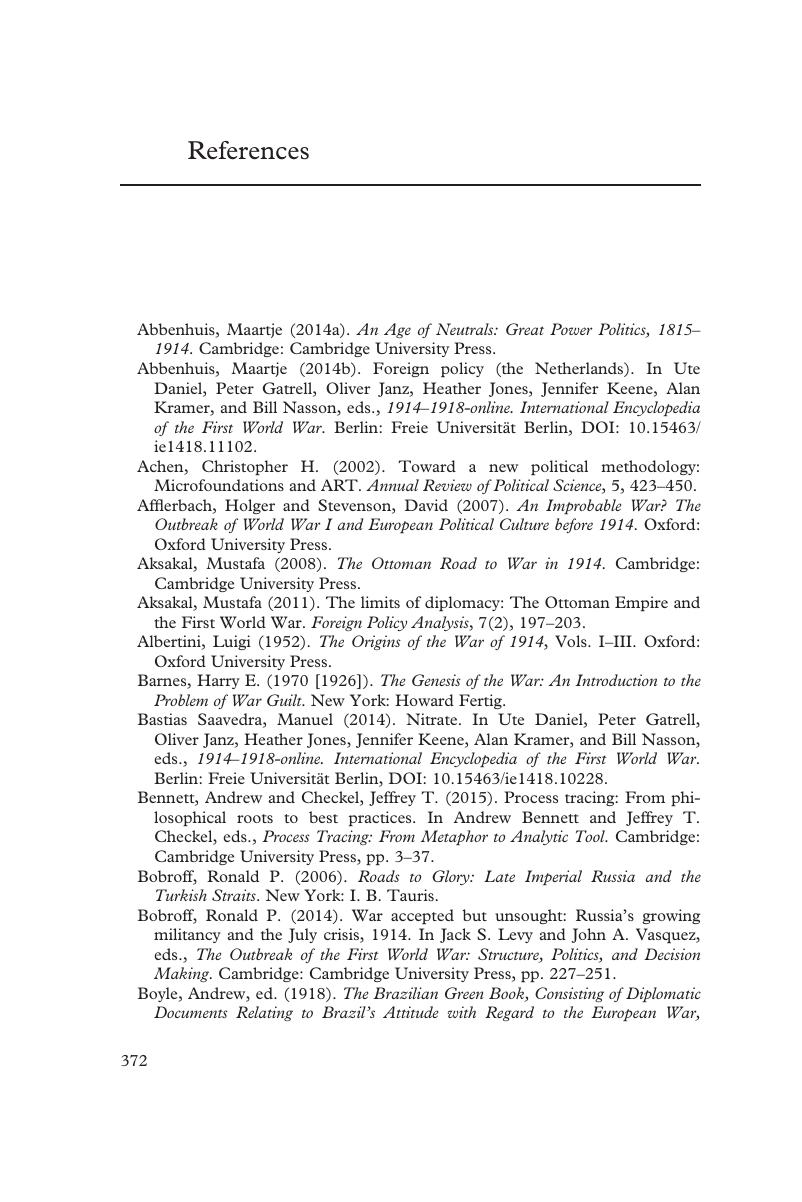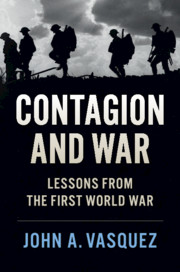Book contents
- Contagion and War
- Contagion and War
- Copyright page
- Dedication
- Contents
- Tables
- Preface
- Introduction
- Part I Theoretical Expectations
- Part II Dyadic Case Analyses: History and Data
- Part III Conclusions: Lessons from the First World War
- References
- Name Index
- Subject Index
- Plate Section (PDF Only)
- References
References
Published online by Cambridge University Press: 13 December 2018
- Contagion and War
- Contagion and War
- Copyright page
- Dedication
- Contents
- Tables
- Preface
- Introduction
- Part I Theoretical Expectations
- Part II Dyadic Case Analyses: History and Data
- Part III Conclusions: Lessons from the First World War
- References
- Name Index
- Subject Index
- Plate Section (PDF Only)
- References
Summary

- Type
- Chapter
- Information
- Contagion and WarLessons from the First World War, pp. 372 - 386Publisher: Cambridge University PressPrint publication year: 2018



